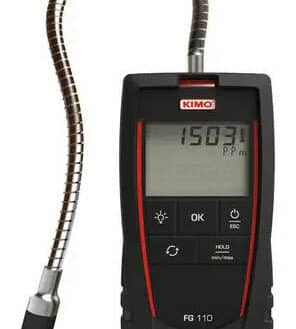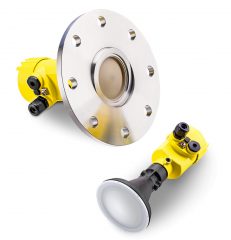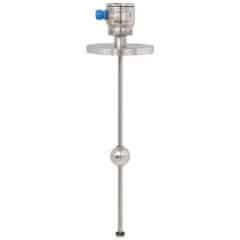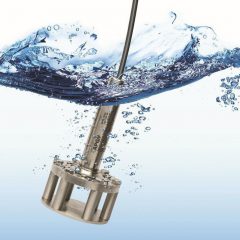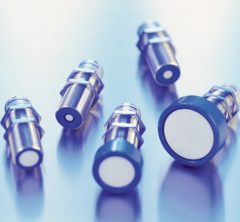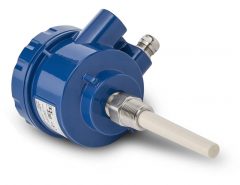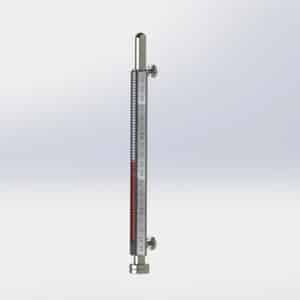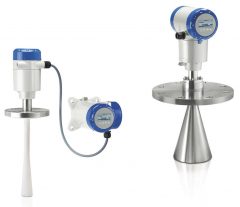
AMETEK Drexelbrook radar level sensor
The radar level sensor is installed on top of the tank, above the product. It sends microwaves to the product surface, which in turn reflects them back to the sensor. By measuring the travel time between the emitted and reflected wave, the distance between the sensor and the product surface can be deduced. This makes it possible to calculate the level of the product.
The main advantage of this type of sensor is that it can measure the level of any type of product (liquids, pastes, solids, etc.) as long as it is not electrically conductive. Radar sensors are extremely accurate and insensitive to product properties (temperature, pressure, density, conductivity, etc.).
As this is a completely contactless technology, these sensors can be used in harsh environments or with products that are abrasive, corrosive, etc.
Another advantage is that these sensors are installed above the product level, usually at the top of the tank, so they can easily be removed without needing to empty the tank.
There is an interesting alternative to radar technology: the guided radar sensor or guided wave sensor. This type of sensor works on the same principle, but the microwaves are guided along a rod or a cable which is immersed in the product. By guiding the wave in both directions, the sensor is less sensitive to disturbances, in particular to disturbances on the product surface (i.e. an agitated surface, foam generation, drain cones for loose solids, etc.) and by elements in the tank (internal structural elements or equipment with wave-reflecting surfaces).
